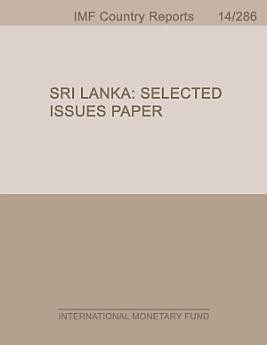Sri Lanka: Selected Issues
International Monetary Fund. Asia and Pacific Dept
2014年9月 · International Monetary Fund
电子书
45
页
report评分和评价未经验证 了解详情
关于此电子书
EXECUTIVE SUMMARY The first chapter on monetary policy transmission examines the channels through which innovations to policy variables—policy rate or monetary aggregates—affect such macroeconomic variables as output and inflation in Sri Lanka. The effectiveness of monetary policy instruments is judged through the prism of conventional policy channels (money/interest rate, bank lending, exchange rate, asset price channels) in VAR models, and the timing and magnitude of these effects are assessed using impulse response functions, and through the pass-through coefficients from policy to money market and lending rates. Our results show that (i) interest rate channel (money view) has the strongest Granger effect on output with 0.6 percent decrease in output after the second quarter and a cumulative 0.5 percent decline within a 3 year period in response to innovations in the policy rate; (ii) the contribution from the bank lending channel is statistically significant (adding another 0.2 percentage points to the baseline effect of policy rates) in affecting both output and prices but with a lag of about 5 quarters for output and longer for prices; (iii) the exchange rate and asset price channels are ineffective and do not have Granger effects on either output or prices. The second chapter takes a fresh look at the public debt reduction strategy. It asks two questions: (i) what has been driving the increase and subsequent decline in Sri Lanka’s public debt? (ii) Is Sri Lanka’s public debt too high, and if yes, how much, how fast and how should it be reduced? The chapter finds that, until recently, favorable interest rate-growth differential reflecting the combination of relatively high real GDP growth and low real interest rates on public debt has worked to reduce the debt ratio, even as primary deficits and occasional currency depreciation pushed the ratio in the opposite direction. More recently, however, the average borrowing costs began to increase, reflecting the reduced role of concessional financing and increased resort to market borrowing. Thus, debt reduction became more dependent on real growth and stronger primary balance, and this trend is likely to continue. The chapter documents that Sri Lanka’s public debt is one of the highest among the emerging economies, particularly when measured against the relatively low revenues, and suggests that the authorities target its gradual reduction to 50 percent of GDP, relying mainly on revenue measures. This target is more ambitious than the authorities’ medium-term objective of reducing the debt ratio to 60 percent of GDP, but it is considered by staff as prudent.
为此电子书评分
欢迎向我们提供反馈意见。
如何阅读
智能手机和平板电脑
笔记本电脑和台式机
您可以使用计算机的网络浏览器聆听您在 Google Play 购买的有声读物。
电子阅读器和其他设备
如果要在 Kobo 电子阅读器等电子墨水屏设备上阅读,您需要下载一个文件,并将其传输到相应设备上。若要将文件传输到受支持的电子阅读器上,请按帮助中心内的详细说明操作。








